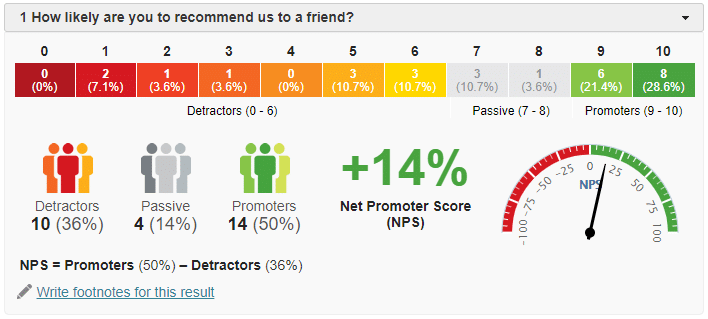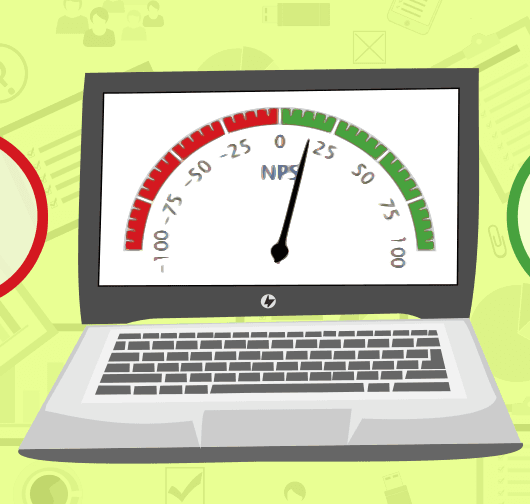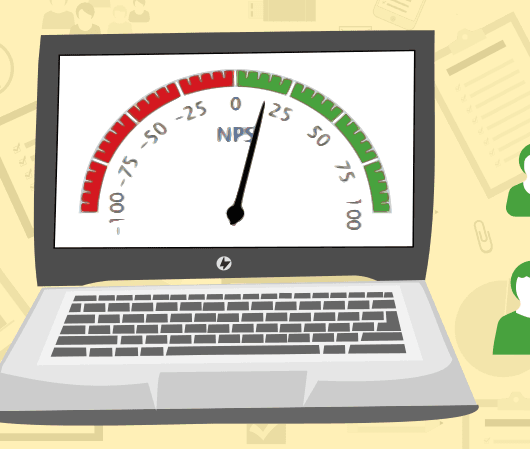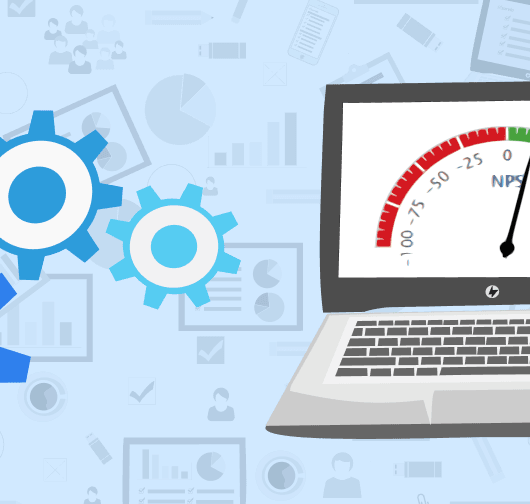Net Promoter Score®: NPS is gaining popularity – Part 1
A study conducted by Walker Information points out that by 2020 customer experience (CX) will become a key difference between brands. This growing trend will put customer satisfaction even before price and product. Satisfied customers need to be cherished as the apple of one’s eye and their satisfaction has to be looked after carefully. Net Promoter Score®, a method to measure customer loyalty and satisfaction, represents a great help for companies to better understand their relationship with their customers. Nowadays, more and more successful companies are using this management tool, the essence of which is an easy-to-use but precisely targeted question. In the first part of our series describing this method, you can read what NPS® is and how to calculate it.
What is NPS®?
It all started in 2003 when a marketing consultant named Fred Reichheld provoked the world with his article “The One Number You Need To Grow” published in Harvard Business Review. Along with Bain & Co. he states that it is sufficient to ask your customers a single simple question to get a solid idea of how loyal they are to your business. That is, whether they come back to you and your product or not. His arguments, based on years of research, highlight the simplicity of its measuring and the fact that it is applicable in any field. NPS® should represent the customer’s own willingness to spread a good word about your brand based on their own experience with it.
The NPS® principle is simple. After interacting with your customer (e.g. shopping in your store, performing a service, etc.), they will be asked through a questionnaire about how likely he/she would recommend your services to their colleagues or friends. Nothing more, nothing less. The customer then impulsively evaluates their experience on a scale from 0 to 10, where 0 represents “definitely not recommend” and 10 “definitely recommend” and sends it over to you. In addition, it can be extended by a verbal feedback. This allows the customer to voluntarily tell you what he/she would appreciate, or what would make him/her more satisfied. While optional feedback makes the processing process more complex, it can be an ideal guide to what might move you further.
Unconventional calculation
You might think – nothing new under the sun, one just sums it all up and calculates the average. However, that’s not the case. The non-standard NPS® calculation is exactly what makes it so unique. Namely, the scoring scale does not break exactly in the middle and its neutral value is not where you would expect it. According to the results, the respondents are divided into the following three groups:
- Promoters (rating 9-10) – loyal and enthusiastic customers who will keep shopping with you, happily share their good experiences with others and thus support your growth.
- Neutral / Passive (rating 7-8) – Customers who are satisfied but not equally excited. They will not slander you but won’t hesitate to shop with your competitor.
- Critics (rating 0-6) – Dissatisfied customers who may not be afraid to talk about their negative experiences and can do harm to your brand by spreading their opinions.
The actual score is then calculated by subtracting the percentage of Critics from the percentage of Promoters. Or add up all Promoters, subtract all Critics from them, and divide the result by the total number of responses received. The Group of Neutrals is also extremely important to your company, however it does not affect the resulting value at all. That is set in stone by the methodology.
Let’s say, for instance, that 10 customers rate you with 0, 0, 1, 4, 5, 6, 7, 8, 9, 10. That is 6 Critics, 2 Neutrals, and 2 Promoters. The average rating is 5, which causes neither harm nor benefit on a scale from 0 to 10. But then, we count the NPS® scores as follows: 20% – 60% resp. (2 – 6) / 10 and get a result of -40% or -0.4. The average of 5 out of 10 suddenly doesn’t sound all that bad compared to -0.4 out of 10, which might be a rather unpleasant wake up call.
But that is the idea of NPS®. Someone who evaluates you as average or worse will realistically probably not promote you. Thus, we consider them to be Critics as they will not be loyal to you. To change that, you need to work on yourself so that one day, they could become your Promoters. NPS® could then be understood as a signal of something not functioning as well as it’s supposed to. If and how you’ll act on it, that’s up to your judgement.
Survio offers Net Promoter Score® as one of the question types and can pre-fill the question for you.
If the text of the question does not suit you, you can adjust it to your needs and preferences, as well as the text of the answers. However, the scale and the calculation itself are set according to the methodology of Fred Reichheld;
How to deal with the collected values or what are NPS®’s advantages, disadvantages and other details will be described in the second part of our series. Stay tuned & follow us! Share your questions, ideas or comments with us on Facebook, Twitter or via e-mail!
Create your own questionnaire or survey for free
Setting up your first survey is quick and straight forward. Choose from one of 100 predefined templates or create your own from the scratch. Start getting your first responses in 5 minutes.
Create your own survey





